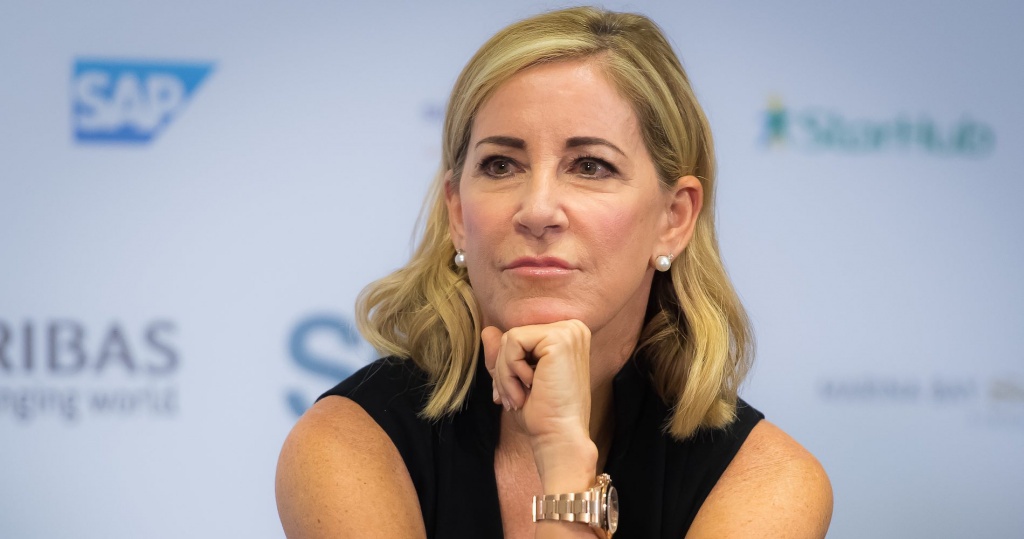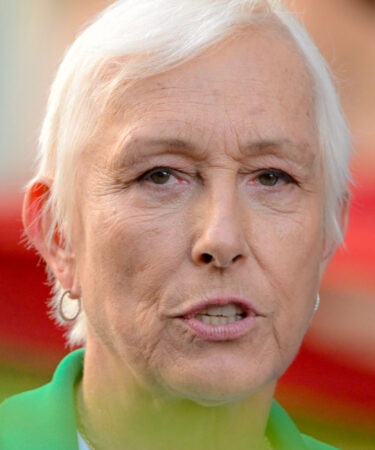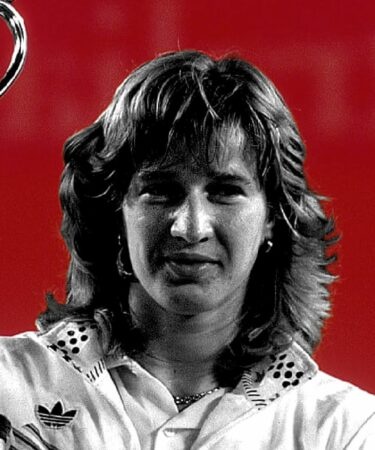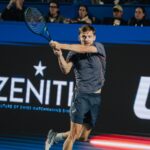“We are still fighting for recognition” – Evert explains why her rivalry with Navratilova is the biggest in tennis
Chris Evert and Martina Navratilova played each other 80 times over 16 years. In an interview with Tennis Majors, Evert tells Simon Cambers what made their relationship so special and how women still have to fight to be heard
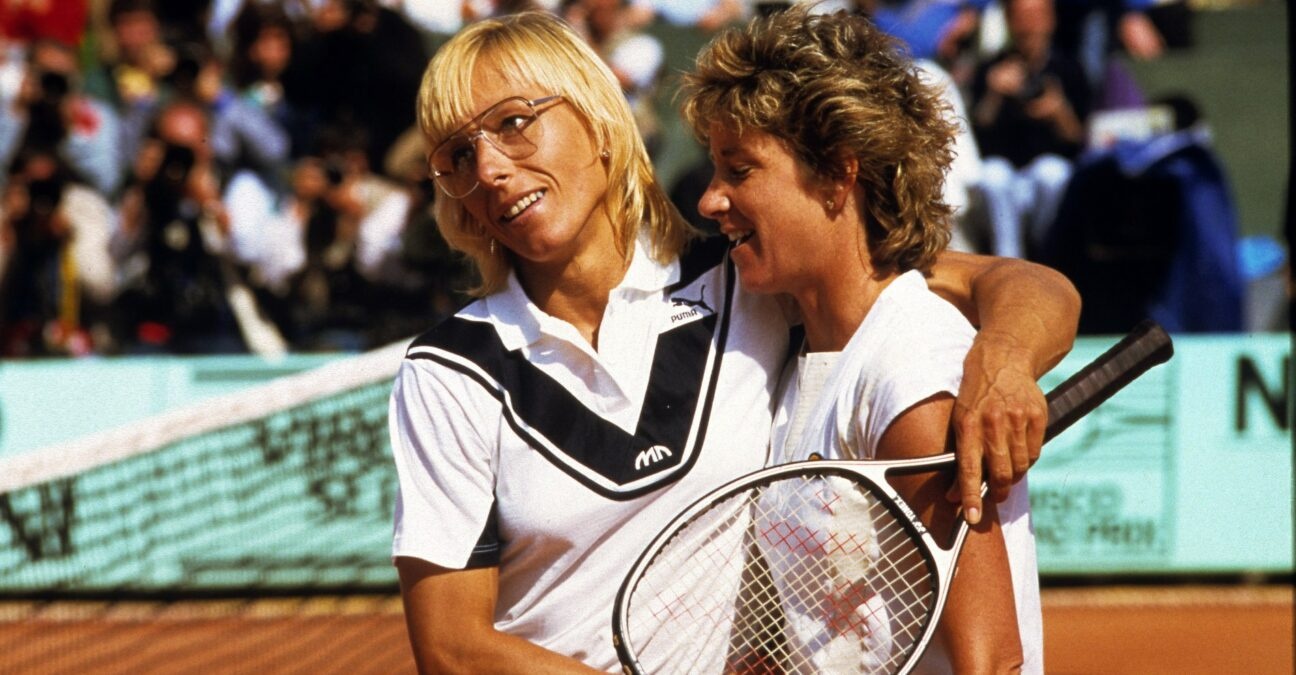 Chris Evert and Martina Navratilova embrace after the Roland-Garros final in 1985 – Tennis Magazine / Panoramic
Chris Evert and Martina Navratilova embrace after the Roland-Garros final in 1985 – Tennis Magazine / Panoramic
On the eve of the 2020 Roland-Garros final between Rafael Nadal and Novak Djokovic, world No 1 Djokovic was asked what he thought about his rivalry with the Spaniard. Pointing out how many times they have played (the final was their 56th meeting), Djokovic described Nadal as his “greatest rival” and then said:
“I think our head-to-head is the biggest head-to-head ever in the history of the sport.”
Now, Djokovic was doubtless only thinking about men’s tennis. But that’s the point. Chris Evert, the former world No 1, winner of 18 Grand Slam singles titles and one of the most iconic figures in the sport’s history, was quick on the uptake.
Had Andy Murray seen it, he would surely have made a point of saying “in men’s tennis”, as he famously said “male player” when one reporter at Wimbledon made the mistake of overlooking women when quoting a statistic.
Evert and Martina Navratilova, the two women who dominated their sport for more than a decade, played each other 80 times.
And in an interview with Tennis Majors, the American Evert explained why she felt that she had to make the point.
“We’re still fighting for recognition as athletes,” Evert said. “It carries over to life, carries over to the work force. It goes back 50 years ago, there were only men athletes out there (as a majority), only men participated in sport. I think (it’s) that stigma of ‘women need a voice’. I think that we just want to be heard. We just want a voice. I think that it’s gotten so much better but it’s still hanging in the air, “(the idea that) men are still the stronger sex. Male athletes are still more popular than than females. Trust me, I’m not on a vendetta against Novak. I’m horrified that he might even think that. It’s nothing personal against Novak at all. It was just the principle of : if you’re going to say that, say it’s the greatest rivalry in men’s tennis. It’s really simple.
“I think I get more sensitive also about the fact that Martina’s won Wimbledon nine times and nobody really talks about that. Nadal’s won the French Open, how many times, 13? Has anybody won a Grand Slam more than nine times? Once in a while (Navratilova’s record) will show up at Wimbledon. But it’s like, God… I mean, I think my clay court (Roland-Garros) winning seven gets more publicity than her nine Wimbledons. So I’m like: why don’t we celebrate that? And what about Steffi (Graf), and the Golden Slam (in 1988)? I mean, Olympics and four grand slams. If a man had done that, it would be mentioned all the time. Nobody ever mentions that.”
For context, Djokovic and Nadal have met 56 times over a 15-year span; Nadal and Roger Federer have played each other 40 times over 15 years; and Djokovic and Federer have gone head to head 50 times over 15 seasons.
Evert-Navratilova: The staggering statistics
Evert’s rivalry with Navratilova spanned 16 seasons, from their first meeting in Akron, Ohio in 1973, when Evert won 7-6, 6-3, to their last, in Chicago in 1988 when Navratilova triumphed 6-2, 6-2. The stats concerning their rivalry are just staggering.
- Total matches: 80 (Navratilova 43-37)
- Finals: 60 (Navratilova 36-24)
- Grand Slam finals: 14 (Navratilova 10-4)
- Grand Slam matches: 22 (Navratilova 14-8)
- Matches that went three sets: 29 (Evert 15-14)
- All the details of their 80 matches here
Rivalry “magnified by the differences”
For Evert and Navratilova, playing each other week in week out was just part of their life. As the Nos 1 and 2 for most of their careers, they never ducked each other and always stood up to be counted. Evert won 16 of their first 20 encounters but as Navratilova turned herself into a supreme athlete, the dynamic changed and she eventually ended up shading their head to heads.
What made their rivalry so enthralling was that they were opposites, in almost every way. On the one hand, you had Evert, America’s sweetheart, an unerringly accurate right-handed baseliner who was unflappable on court; on the other, the left-handed, serving and volleying Navratilova, from what was then Czechoslovakia, the flamboyant shot-maker who was never afraid to wear her heart on her sleeve. The pair were on magazine covers, in TV campaigns, the faces of the sport.
“I don’t even remember when I started feeling like this is something that’s bigger than us, that the biggest thing going on in tennis right now is our rivalry,” Evert said. “I don’t even remember how far into the rivalry we were, but Martina and I just kept pushing each other. For a certain amount of time, we left the field behind.”
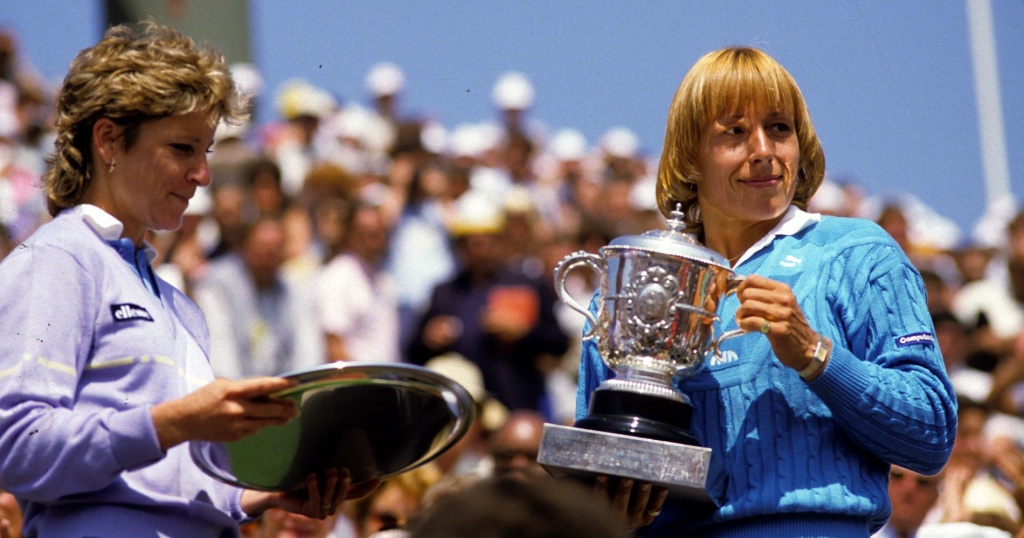
“I think it was magnified by the differences, the contrasts,” Evert said. “I try to think to myself, if it was Chrissie and Tracy (Austin), who played alike, or if it was Martina and Jana Novotna who played alike, would it have had the same impact? I don’t think so. I think both were such fascinating stories and so different in where we came from and what our beliefs were and how we grew up and our style of play and our personalities. Everything that you looked at was so different. She brought her set of fans to the table. I brought my set of fans to the table. And then you had double the fans that normally would be watching a tennis match, so I think that really elevated tennis.”
Evert and Navratilova were the biggest of rivals on the court but for the most part, they were good friends off it. And they were around each other so often that, as Evert says, they were almost each other’s coach.
“We were forced to dig deep and learn about strategy even more than if you’re playing against (anyone else),” she said. “We were so even. We were not even in the physical component – she was a much better natural athlete than I was – (but) in the beginning, I was much more mentally strong than she was. So it was like we were both opposites there. But when you take everything and you throw it into a bag, it ended up we were so equal, that we had to pick apart each other’s games and pick apart each other’s brains and to sort of figure out how to beat each other.”
Personal relationship as fascinating as on-court rivalry
If clay was Evert’s domain – she won 11 of their 14 clashes on the dirt – grass belonged to Navratilova, who won 10 of their 15 clashes. They were tied 8-8 on hard courts and on the slick carpet surface of the many indoor tournaments that were around at the time, the Czech, who became an American citizen in 1981, was supreme with a 22-13 lead.
“We would both get nervous at different times, like every time I stepped out on a grass court against Martina, especially at Wimbledon, I’d be like, ‘oh, what do I do?'” Evert said. “Do I have to do handstands to beat this woman on grass? I just felt like it was a losing battle. Very often I’d already lost when I walked on the court with her. And I think at times she felt that way, walking on clay with me. It’s like, ‘oh my God, I’ve got to be so patient and I’m going to have to get a thousand balls back and this girl’s going to drive me nuts.'”
But it was the personal relationship that was perhaps as enthralling as their on-court rivalry.
“Our relationship was (up and down),” she said. “In the beginning, I remember I played doubles with her. I was No 1 and she was No 4 and then she was No 3 and No 2. And then she started beating me because we were practising and playing doubles. I was like, ‘I think she’s becoming a little too familiar with my game’. So I broke up that partnership, because I felt like singles was more important to me than doubles. I went to her and told her. I did it in nice way. And later on, when she had Nancy Lieberman as her coach, I remember Nancy would tell her, you’ve got to hate her, hate Chrissy, (she’d say) ‘what do you mean you’re inviting her over to dinner? No, you’ve got to hate her, have nothing to do with her’. That’s the way Nancy competed, successfully. So Martina became a different person then. And unfortunately, we weren’t close at all during that time.”

Evert likes to joke that her rivalry with Navratilova is the longest relationship of her life. Both women ended up winning 18 Grand Slam singles titles and between them they won 334 singles titles (Navratilova just shading it with 167 to 157). Together they helped to revolutionise the game and they remain firm friends to this day.”When she (Navratilova) went to Judy Nelson, Judy was: ‘Chrissie’s so nice. Why don’t we have her over for dinner?'” Evert said. “I went to Aspen, stayed at their house for a week. That’s where I met Andy Mill, my former husband. I think at that point, it was mid 80s, it was four or five years from the end of my career and we were mature enough to realise we can separate the two (professional and personal).
“OK, you go out there and try to beat your brains out, but I can also care for you, be your friend,” Evert said. “I think the more interesting thing is not the tennis aspect as much as the personal. The aspect of two women who want to be friends, who are so different, but want to be friends and have seen each other very vulnerable, but have to sort of isolate themselves a little bit because they want to play their best against them.”

